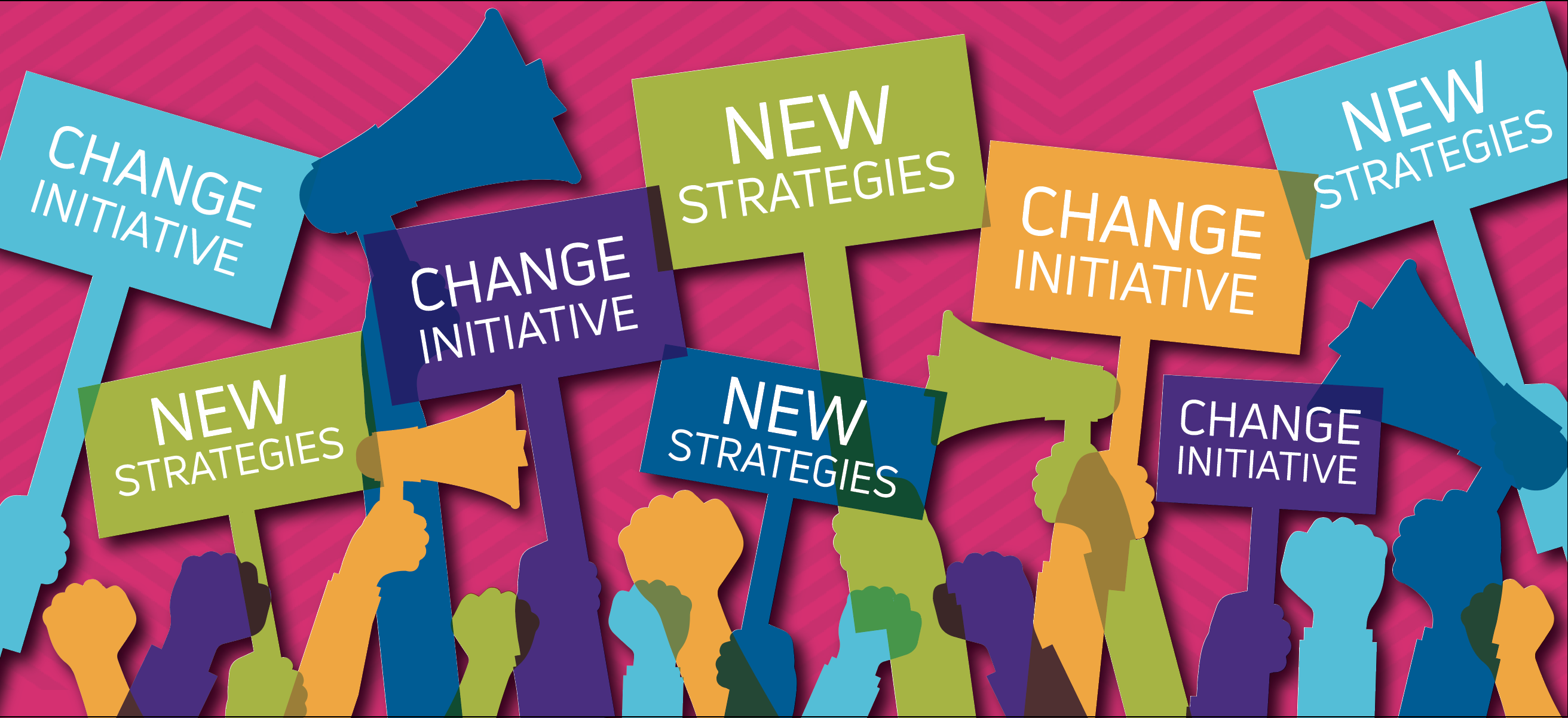An organization’s next level of leaders can become the cork in the strategic-change bottle or the catalyst that creates speed and velocity for achieving the most critical change initiatives. But for a change initiative to stick, at least 50% of these leaders must become unbridled advocates of the new strategies and change initiative in the first 10 months to make the business transformation successful. Unfortunately, for most organizations, this rarely happens.
What We Find When Engaging Next Level-Leaders in Change
When it comes to adopting change, only 20% of next-level leaders start out in favor of the new strategies. Most “one-down leaders” have a lot to lose. They like to wait to see if “this too shall pass.” They’ve probably seen poorly conceived change plans fail in the past. Because of these strategy execution failures, next-level leaders tend to sit on the fence, waiting to see how it all plays out. They’re rarely early adopters of change, and when no one is watching, they’re typically not advocates, either.
This is a major roadblock for strategy execution and will almost always lead to failure. For a change initiative to start and then stick, senior leaders must get their next-in-command colleagues on board and excited.
What Needs to Occur
If the senior leadership team wants their new strategy to be realized, they must invite next-level leaders to examine the “why,” “what,” and “how” of the business transformation being contemplated. The senior leaders can prepare these next-level leaders by:
- Sharing senior leaders’ truth statements, leadership behaviors, underlying beliefs, and rules of the road, and identifying “fight card” issues
- Ensuring they understand their role in leading the change as well as how the senior leadership team will unite for this cause (remember, it all starts at the top)
- Confirming they fully understand the change story of “why,” “what,” and “how”
- Giving them the opportunity to share ideas for tweaking the plan to make it more relevant, impactful, and successful. Next-level leaders need to have their fingerprints on the plan too.
The one-down leader can be vital to the support of the change roadmap that will include the pace and sequence of the lines of effort that will be implemented across the business.
Get Your Front-Line People Involved Too
As we know from decades of experience, most people will tolerate the conclusions of their leaders but will ultimately act on their own. This is why mobilizing the hearts and minds of people is the core challenge of strategic change. The typical response to transformative change by the front line is, “I have no idea what you want me to do differently. I also don’t know if the changes will be good or bad for me. How do I keep my head low and just do the job like I’ve done in the past?”
Here are some ways to deal with this challenge:
- Share the “why,” “what,” and “how” of the strategic change with all people so they can consider and explore the state of the business today and the compelling changes that need to take place tomorrow.
- Create the opportunity for honest, real conversations where front-line teams can share their concerns and opinions without fear of being judged or reprimanded.
- Give people time. Leaders can’t share a change initiative on Monday and expect execution on Tuesday. People need time to process and connect the change to their job. This is where front-line managers play an extremely critical role.
Successful Change Requires the Collective Whole
For an organization to conceptualize and roll out transformative change, it needs every single employee on board. Everyone’s hearts and minds must be mobilized and ready to move in a new direction. Senior leaders can’t create the plan in a vacuum and just expect their enthusiasm to permeate to the front line. Every person plays a valuable role, and everyone deserves the time to consider the “why,” “what,” and “how” of the plan. Employees deserve the opportunity to come to their own conclusions about why this is the best course of action for the whole business.
Change will follow with great velocity once people are invited to understand the changing nature of an industry, the urgencies emerging from the competitive marketplace, and how together they will respond to potential threats and opportunities. People without this understanding can’t accept responsibility for change, and people with this understanding can’t avoid responsibility for finding better ways to create a more dynamic business in the future.
This is part 2 of a two-part blog series. Part 1 focuses on senior leaders and provides insight on what this influential group needs to do to ready themselves – and the rest of their people – for organizational change initiatives.






